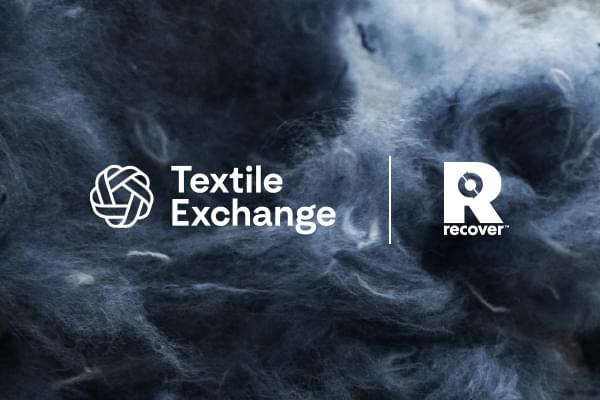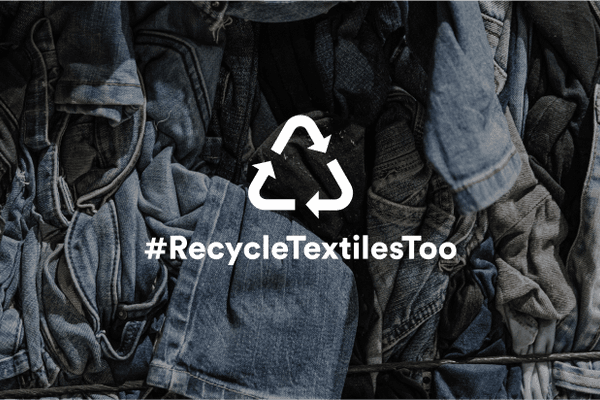Recover’s team reflects on Textile Exchange Conference 2025 “Shifting Landscapes”

Site map

Textile Exchange recently announced its decision to adopt the revised Reclaimed Material Declaration Form (RMDF). The new RMDF was created following the completion of the Tracing Textile Waste project, led by Fashion for Good and launched in August 2023, the RMDF aims to harmonize data and system capabilities by standardizing how textile waste information is collected and shared across the supply chain.
This multi-stakeholder initiative brought together textile waste collectors, recyclers – including us at Recover™ –, certification bodies, digital platforms, and brands – including Target – to co-develop a minimum viable product for Textile Exchange. After two years of collaboration and research, Textile Exchange has confirmed the official launch of a revised RMDF, incorporating the learnings and recommendations from the project. The focus now shifts to enabling widespread adoption and supporting ongoing refinement.
Effective July 1, 2025, the RMDF has been formally approved and is set to become a new recognized framework in the recycled textiles industry. In this article, we’ll explore the details of the project and why it represents a significant step forward for the textile industry, especially in advancing transparency, traceability, and circularity.

The Reclaimed Material Declaration Form (RMDF) sets a new benchmark for traceability and transparency in the textile industry. By standardizing how textile waste is identified and documented, the RMDF enables every shipment to be traced back to its true origin, including the waste supplier, not just the recycler.
This is a major step forward in a sector where transparency around feedstock origins has long been limited. Existing processes are often manual, fragmented, and lack a consistent format for data exchange, making it difficult to verify the authenticity of recycled materials.
The RMDF addresses these challenges with several key innovations:
As demand grows from brands, consumers, and regulators for greater visibility and accountability, the RMDF provides a credible and scalable solution. It supports compliance with current and upcoming legislation, including the EU’s Sustainable Products Regulation (ESPR) and other frameworks pushing for product-level traceability and sustainability.
As a leading recycler and systems contributor, Recover™ played a central role in the Tracing Textile Waste project. Our involvement spanned both strategic and operational dimensions, helping to shape the development and validation of the Reclaimed Material Declaration Form (RMDF) Minimum Viable Product.
Recover™ contributed to the pilot phase by partnering with suppliers at Central America Spinning Works S.A de C.V SAE-A Spinning S.R.L to support the project with recycled cotton fiber designated for Target developments.
We participated in the tracking of post-industrial textile waste across several shipments. These pilots were conducted using both manual and automated processes. Our expertise in textile recycling and commitment to transparency helped ensure that the RMDF could be tested in real-world conditions, with meaningful input from recyclers.
By working alongside partners, Recover™ helped demonstrate the feasibility of standardized data collection and traceability. This contribution was instrumental in validating the RMDF as a scalable solution for improving transparency, compliance, and circularity in the recycled textiles industry.



For brands, the RMDF delivers a comprehensive solution that enhances trust, and transparency. It also extends the visibility into feedstock origins, extending one tier deeper to include the textile waste supplier, ensuring a more complete and credible chain of custody. With standardized data collection at the source, clients benefit from consistent and reliable tracking of recycled materials.
Effective July 1, 2025, the RMDF officially replaces the previous declaration form found in GRS/RCS Appendix C. Recyclers certifiers will be able to use the updated RMDF Excel template (TE-MM-TEM-105) for applicable Transaction Certificates (TCs), which can be completed manually or via digital platforms like Reverse Resources, depending on the supply chain setup.
A dedicated RMDF field is now embedded within TCs, enabling more granular reporting and supporting faster audits and smoother alignment with updated Textile Exchange standards. As leading brands begin to make RMDF a mandatory requirement, this transition positions Recover™ and its partners at the forefront of responsible, transparent recycling, ready to meet the demands of conscious consumers, business partners, and evolving regulations such as the EU’s Sustainable Products Regulation (ESPR).


